Misusability

A practical guide to digital design with a conscience
Update November 2019. This book is still in progress in various draft forms and will likely morph into something new. I am currently researching power structures and influence in the digital age. The ideas and concepts and templates are still relevant and I’ll of course keep you updated via my newsletter Pandamonium on any progress. Also, I have released my handbook, Digital Compassion, to address many of the important issues of getting real with ethical design!
As we are racing to build the best solutions for the brightest digital world there are casualties along the way. Designers and builders often fail to acknowledge, or manage, the negative impact their digital solutions may be having on people and the planet. Understandably it is painful to realize that the tools you create can cause harm, but suppressing those insights will only hurt more. In this book Per Axbom shows what can – and often will – go wrong, and guides you through a process for designing with a conscience.
Examples of misusability
A misuse of usability — what I refer to as misusability — is what happens when we use techniques for removing friction and obstacles in an effort to encourage a specific outcome, and these also lead to significant negative impact. As such misusability can both be a conscious act and an inadvertent effect of good intent. Negative impact may encompass psychological stress, financial loss, enforced inequality or acts that clash with personal goals.

Here are some ways organizations contribute to misusability:
- Allowing the growth of a culture of racial profiling in an online forum without intervening.
- Sending notifications intending to increase usage of a service but instead important notifications trigger anxiety and are ignored.
- Covertly using personal data to provide a “better experience” but at the same time exposing this data to groups with maleficent intent.
- Streamlining a purchase process in such a way that individuals buy the wrong thing, or more than is in their best interest.
Topics covered
Learn how to manage negative impact and “usability misuse”
- Understand outcome vs. impact
- Understand your ethical framework
- Stop misusability before it happens
- Set up an early warning system
- Minimize damage when misusability happens
- Communicate misusability to stakeholders
- Create a culture of awareness
- Understand future challenges
- Boost work satisfaction
Subscribe for updates
Reflections, tools and inspiration
For more on mindful and ethical design, subscribe to my newsletter.

Misusability worksheets
Templates and exercises supporting ethical design
While many people are talking about the “why” and “should have” of ethical design I am intent on contributing to the how. I make these worksheets available publicly at no cost to support responsible innovation. Feedback is always appreciated and I love to hear how they are used. I do appreciate when you credit me and link back to axbom.com.
» All the worksheets can be downloaded from my Dropbox.
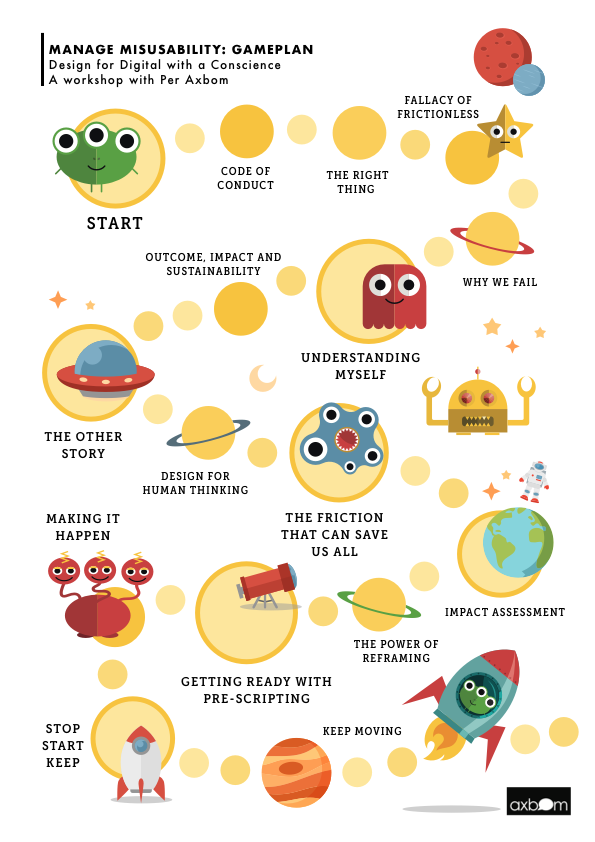
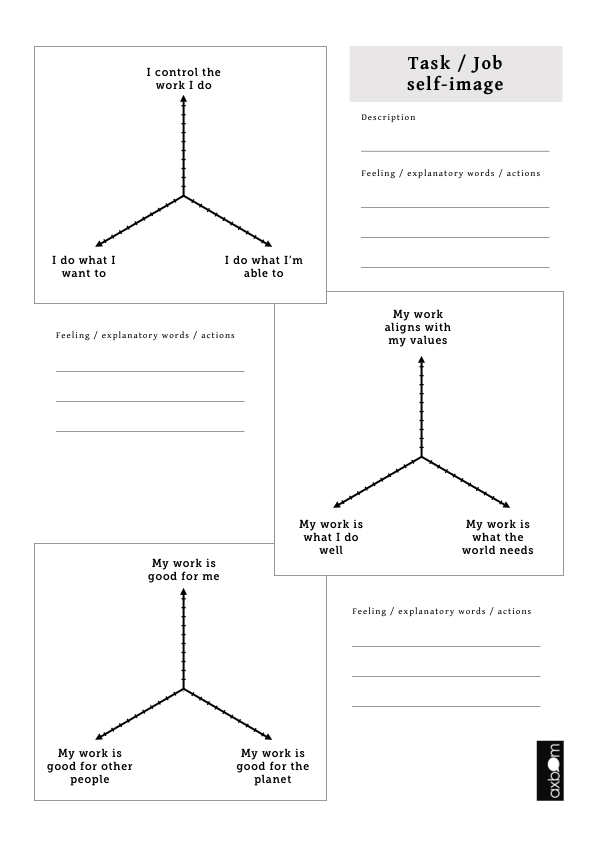
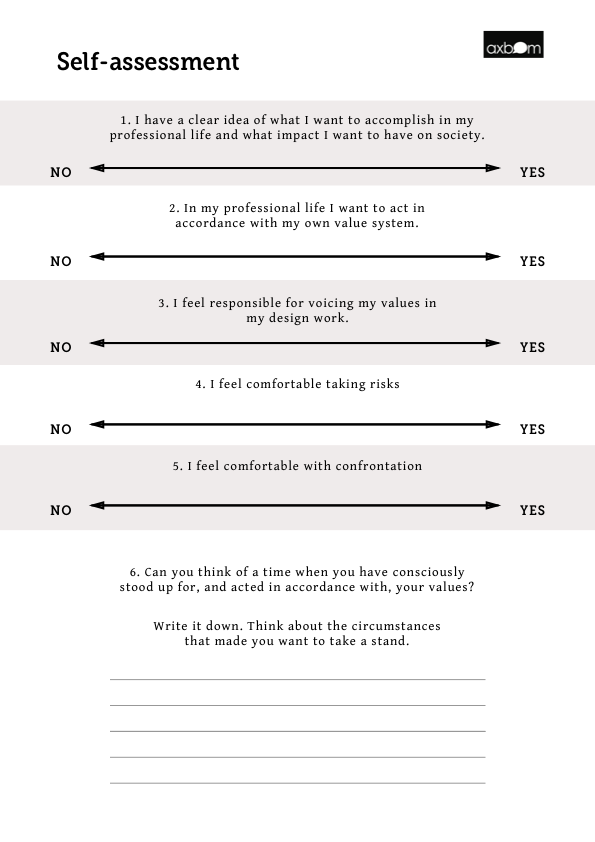
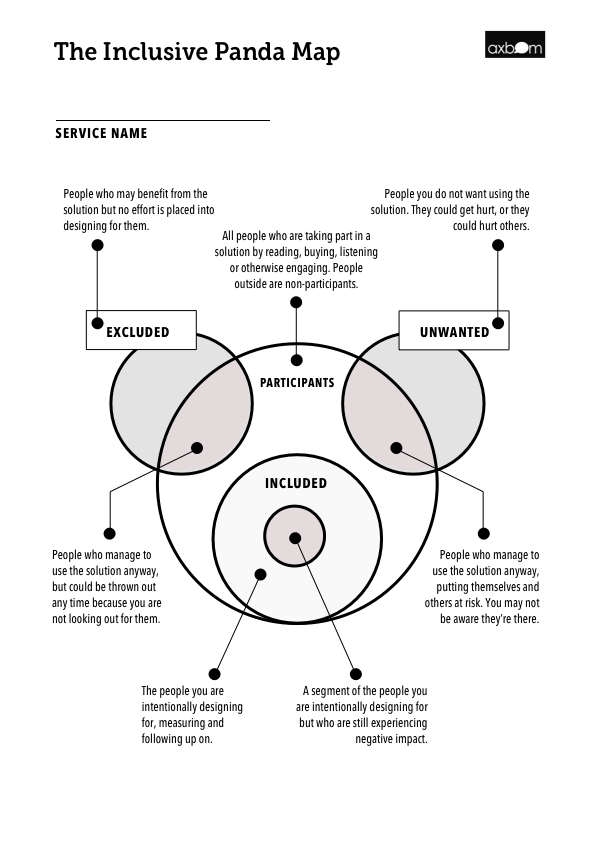
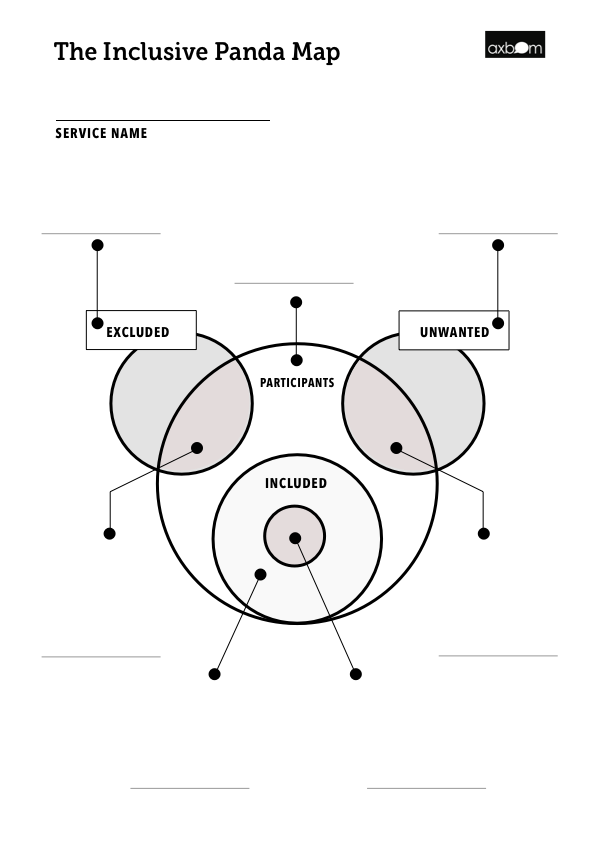
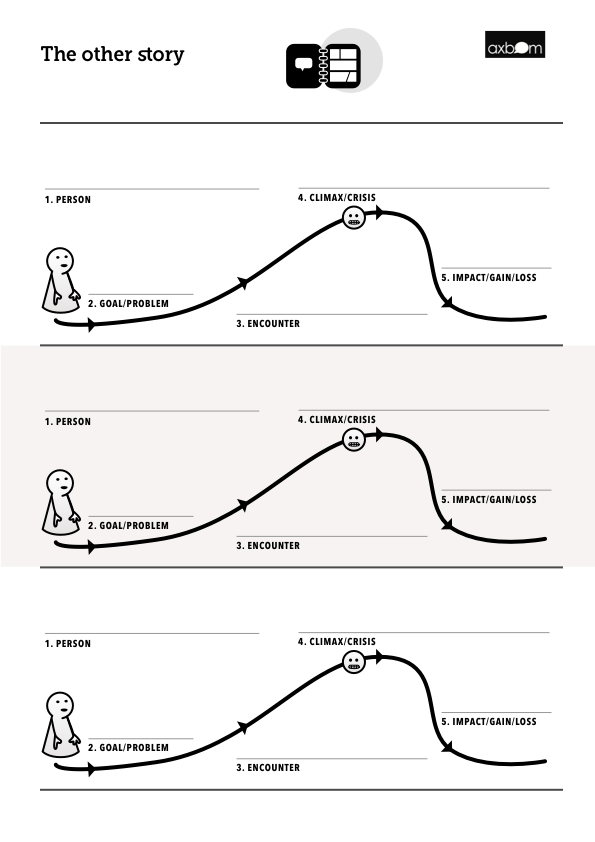
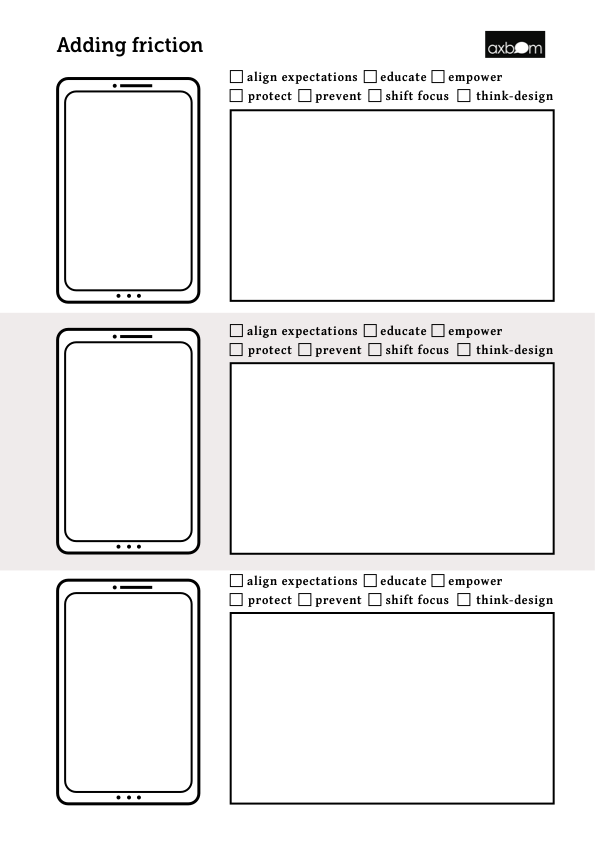
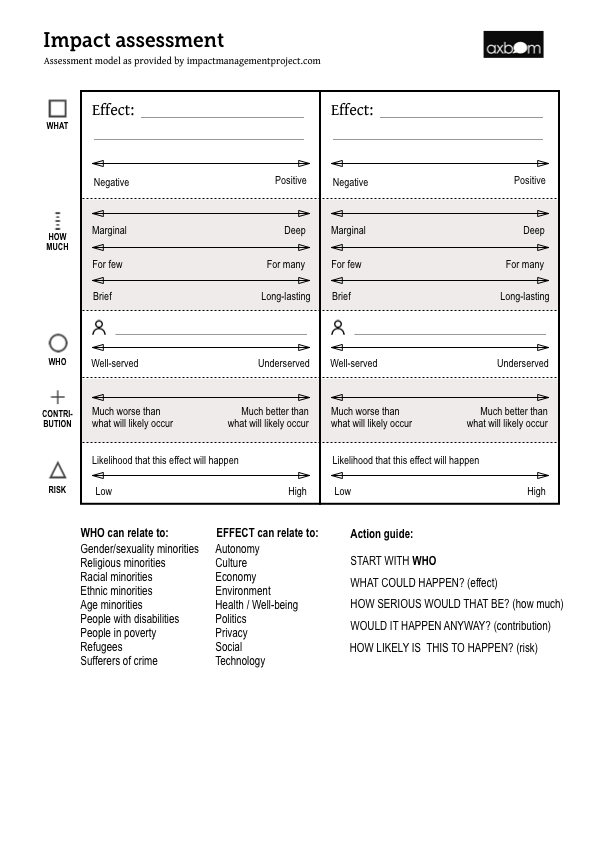
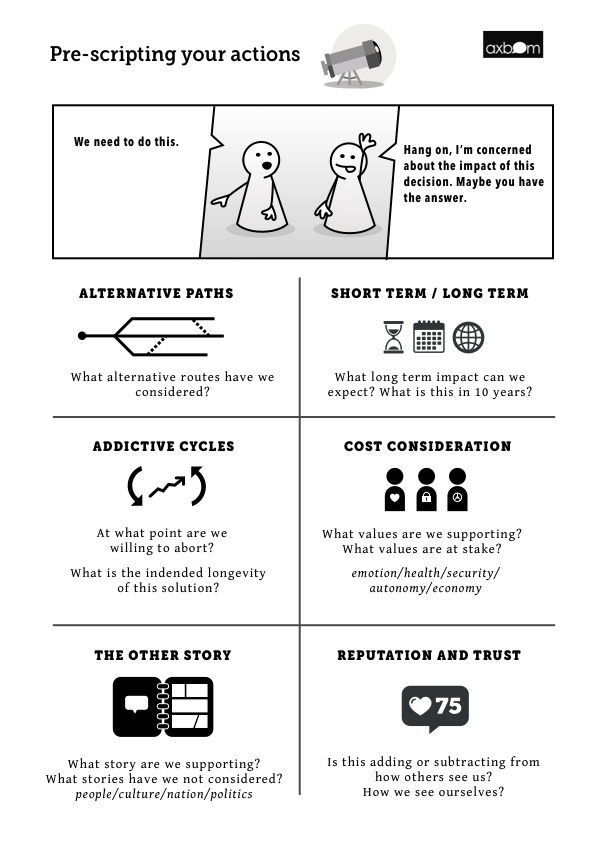
Further reading and resources
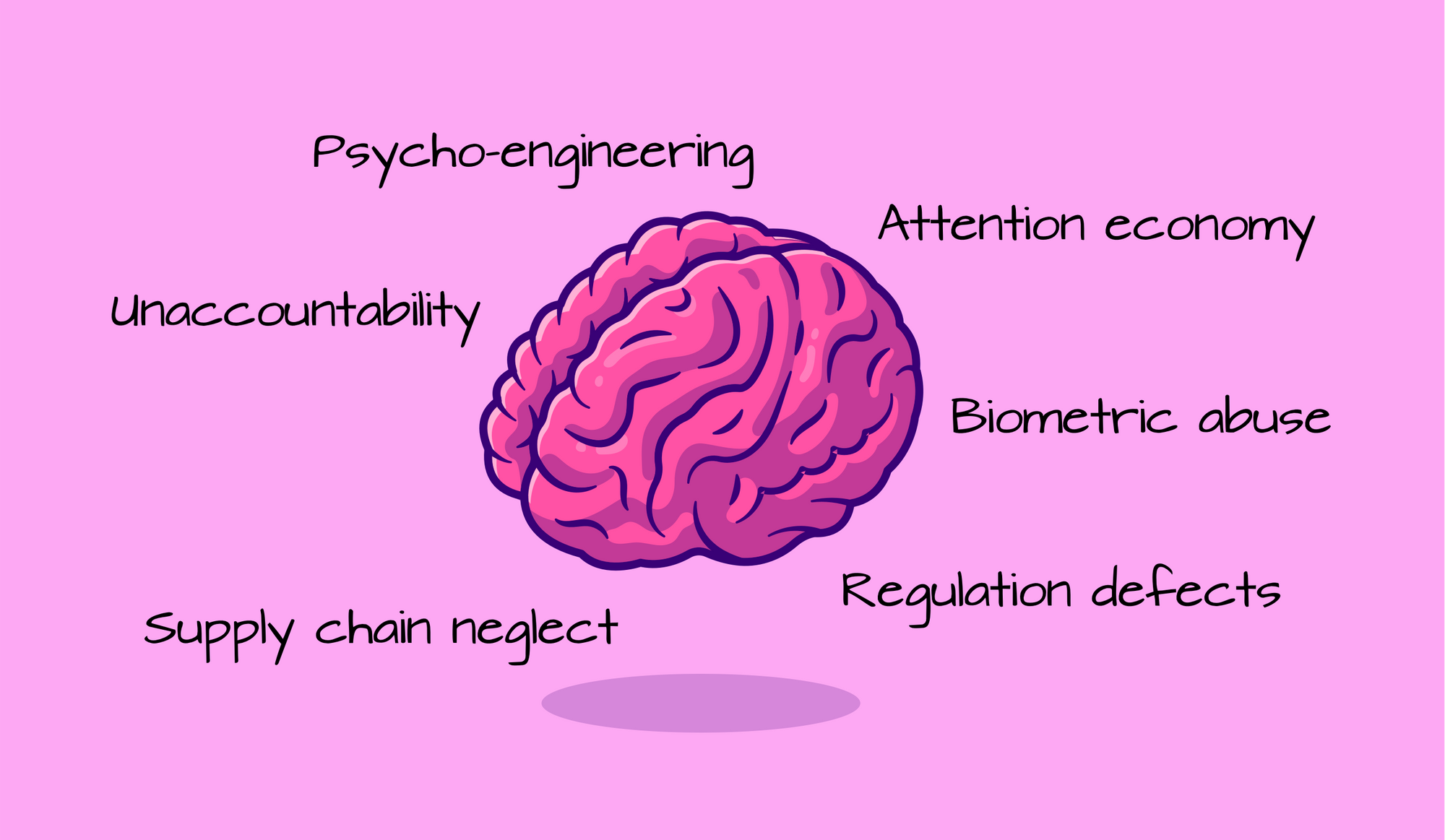
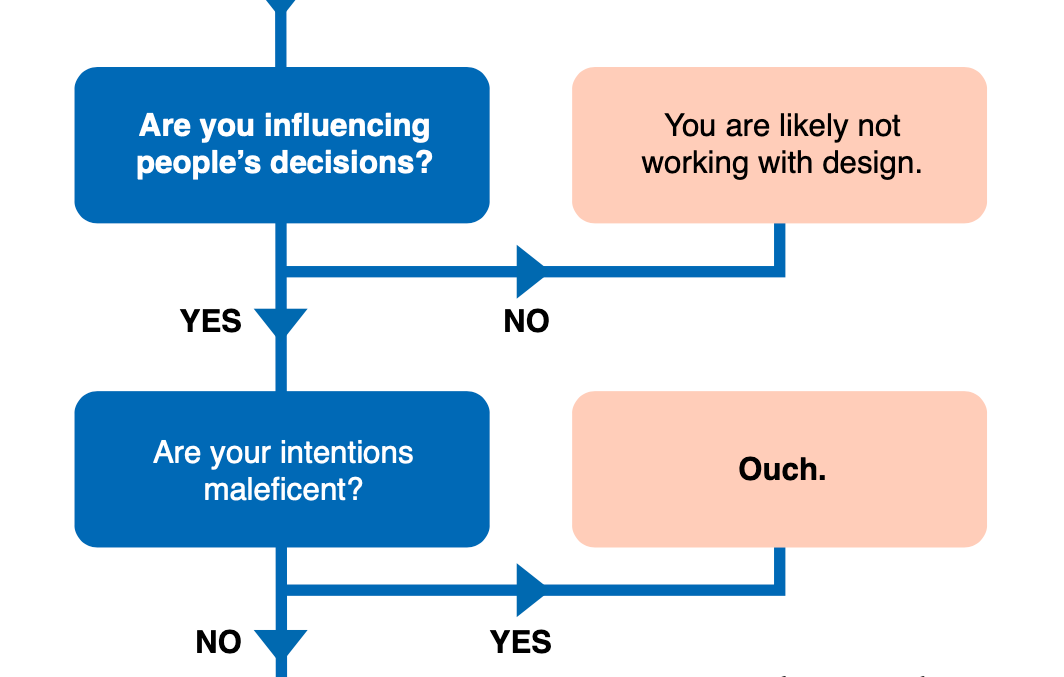





Comment